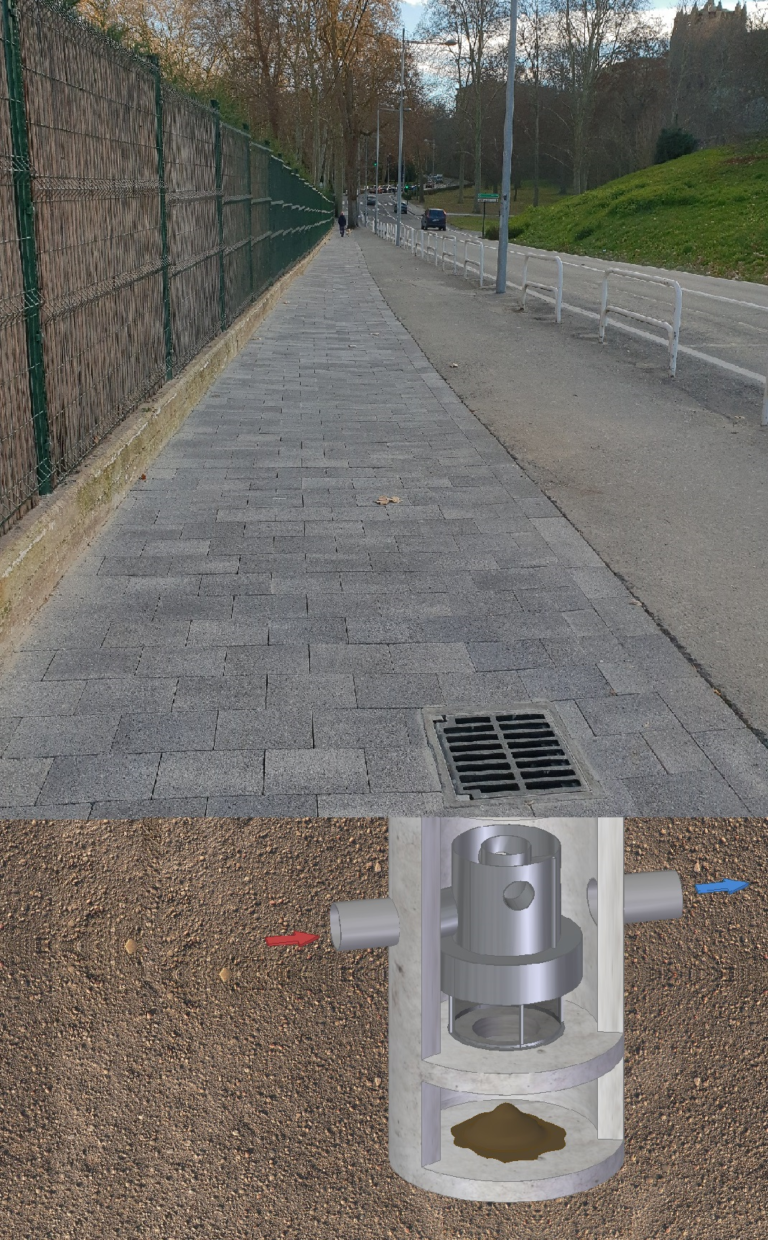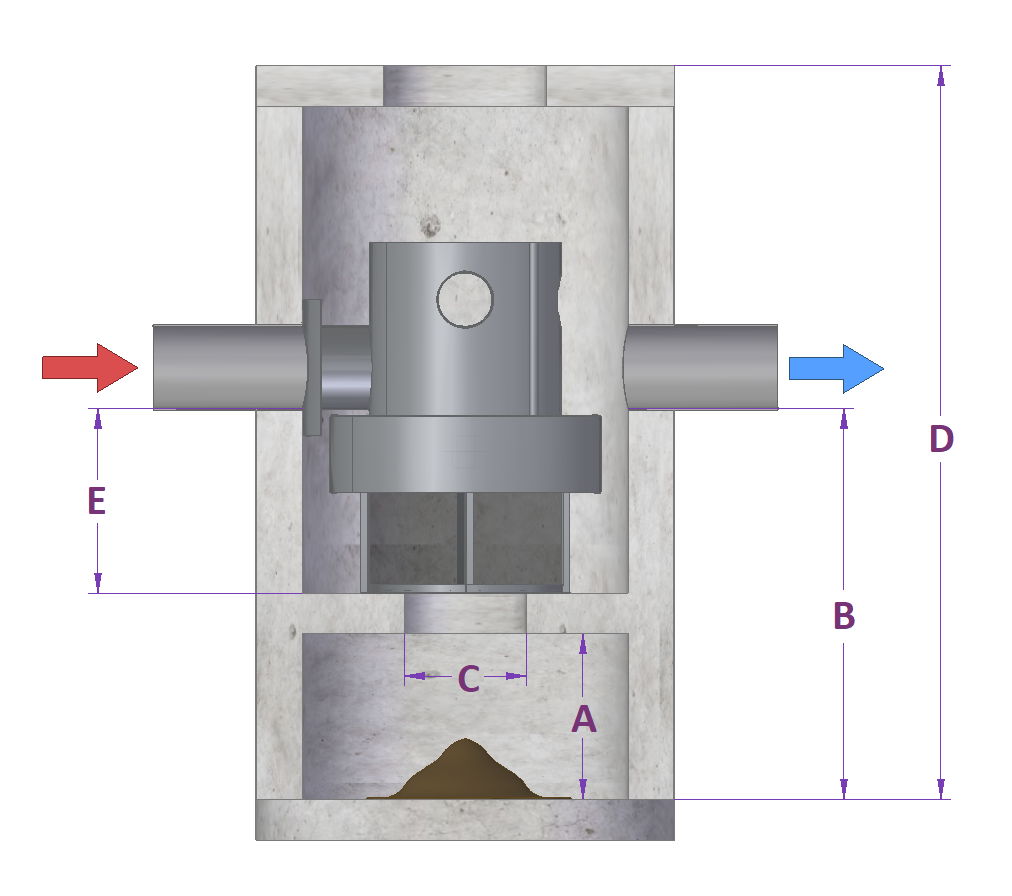In separative systems, the drains or gullies collect, in addition to rainwater, everything that is found in our streets and that is capable of passing through the drain grates. Thus cigarette butts, plastics, hydrocarbons, metals and all kinds of objects and particles that are found in the streets on rainy days are led to the receiving medium.
Our lakes, rivers and seas are polluted if no type of pre-treatment is carried out.
Hydrodynamic Separators or hydrocyclones have been designed to solve this.
In the implementation of SUDS in which the collection is carried out through scuppers, the SUDS used is the receptor of all these contaminants and the Hydrodynamic Separator is the Ideal technology to remove these contaminants from rainwater.
Benefits of Hydrodynamic Separators
Cost effective method of removing gross contaminants.
- Pretreatment reduces the size and increases the longevity of other sustainable treatment techniques based on contamination models.
- Variety of sizes to suit a wide range of applications and flow rates.
- Simple and economical maintenance.
Cost effective method of removing gross contaminants.
Pretreatment reduces the size and increases the longevity of other sustainable treatment techniques based on contamination models.
Variety of sizes to suit a wide range of applications and flow rates.
Simple and economical maintenance.
Applications
- Pretreatment for the collection / reuse of rainwater.
- Pretreatment for infiltration and bioretention.
- Reconversion / urban reconstruction.
- Protection of ponds and lakes against sediments and debris.
- Bomb protection.
System caracteristics
Captures and retains 100% of the sediments and floating elements larger than 5 mm.
- Proven removal of solids, oils and greases.
- Vortex regime that prevents the filter from clogging.
- Retention of all captured contaminants, even at high flow rates.
- Easy access for removal of captured contaminants.
- Verified performance.
- Flexible design.
- Input configuration online, or offline
- Easily installable in existing drainage systems.
| Model | DN | Q 110 micron | Q 5 mm | Q By-pass | Volume Sediments | Volume Oil | A | B | C | D |
| SH1200 | 1200 | 22 l/s | 90l/s | 102 l/s | 0,69 m3 | 227 l | 610 | 1.440 | 450 | 2.550 |
| SH1800 | 1800 | 106 l/s | 240l/s | 309 l/s | 1,55 m3 | 1.034 l | 610 | 2.010 | 720 | 3.350 |
| SH2500 | 2500 | 235 l/s | 446l/s | 515 l/s | 4,42 m3 | 2.341 l | 900 | 2.600 | 1.000 | 4.500 |
| SH3000 | 3000 | 725 l/s | 780l/s | 1023 l/s | 6,36 m3 | 3.890 l | 900 | 3.650 | 1.400 | 5.950 |
| SH3600 | 3600 | 1205 l/s | 1425l/s | 1751 l/s | 11,20 m3 | 6.297 l | 1.100 | 4.550 | 1.800 | 7.400 |
Dimensionamiento Drenaje Sostenible
Brochure Hidrodinamic Separator



